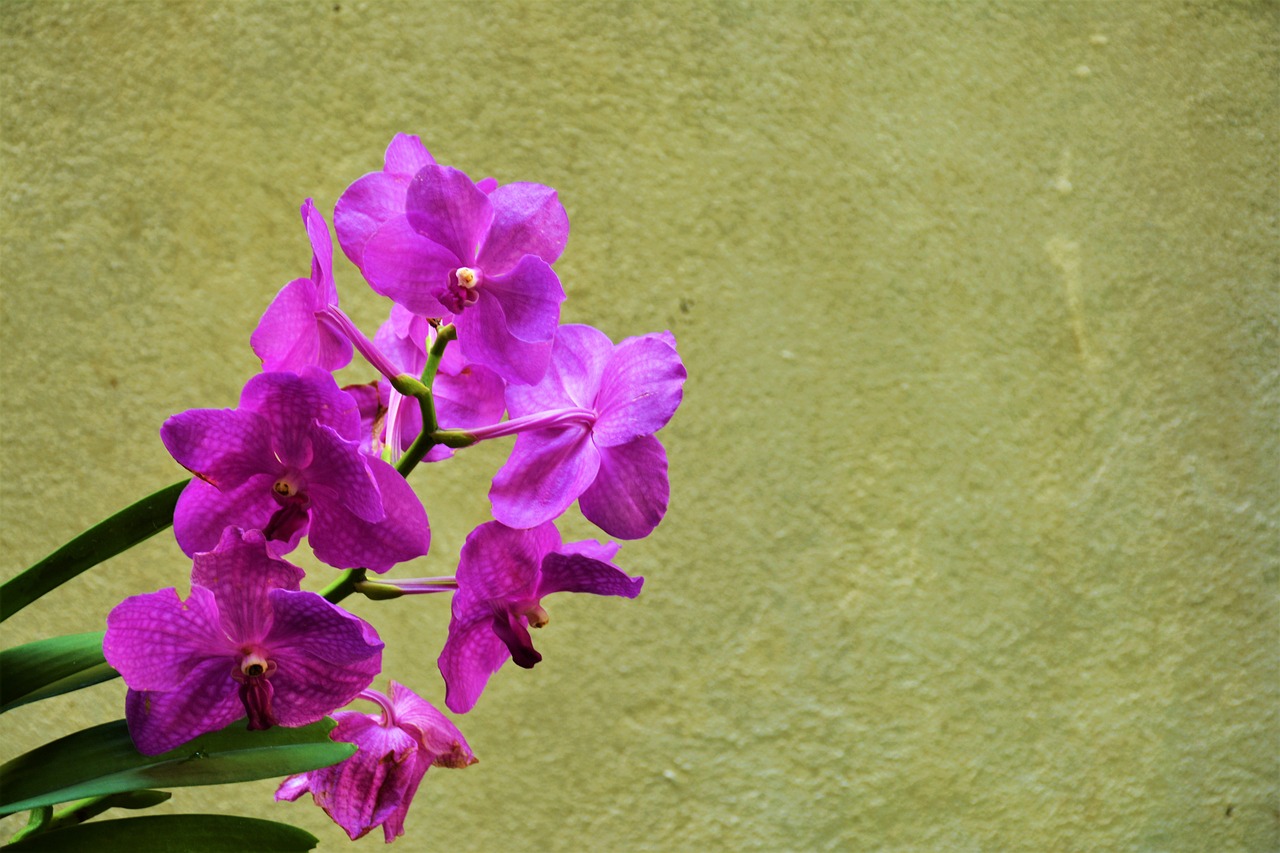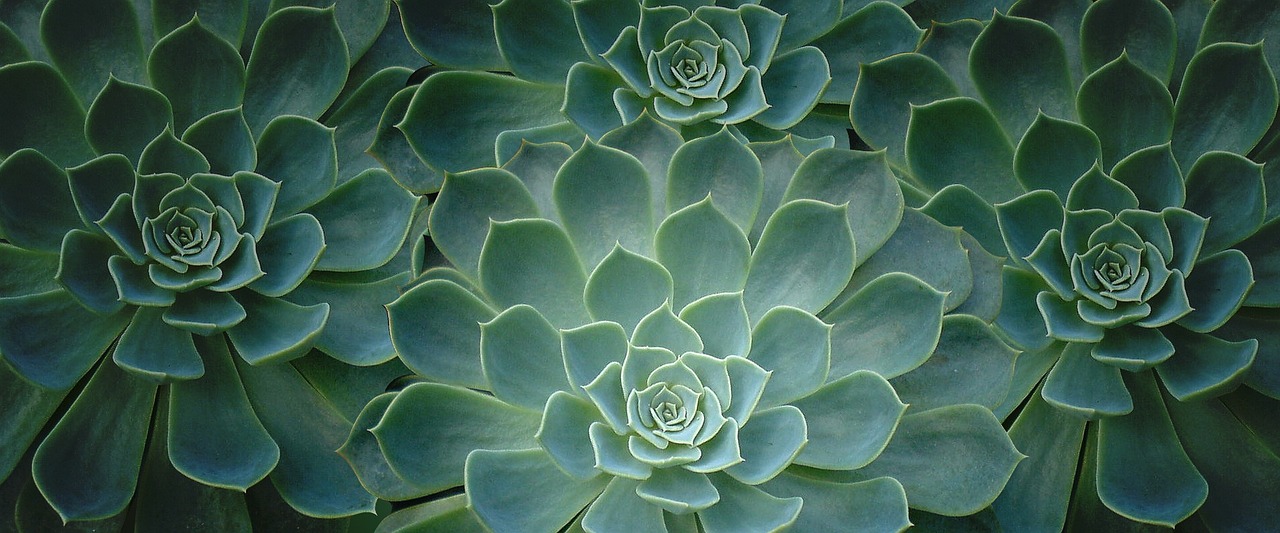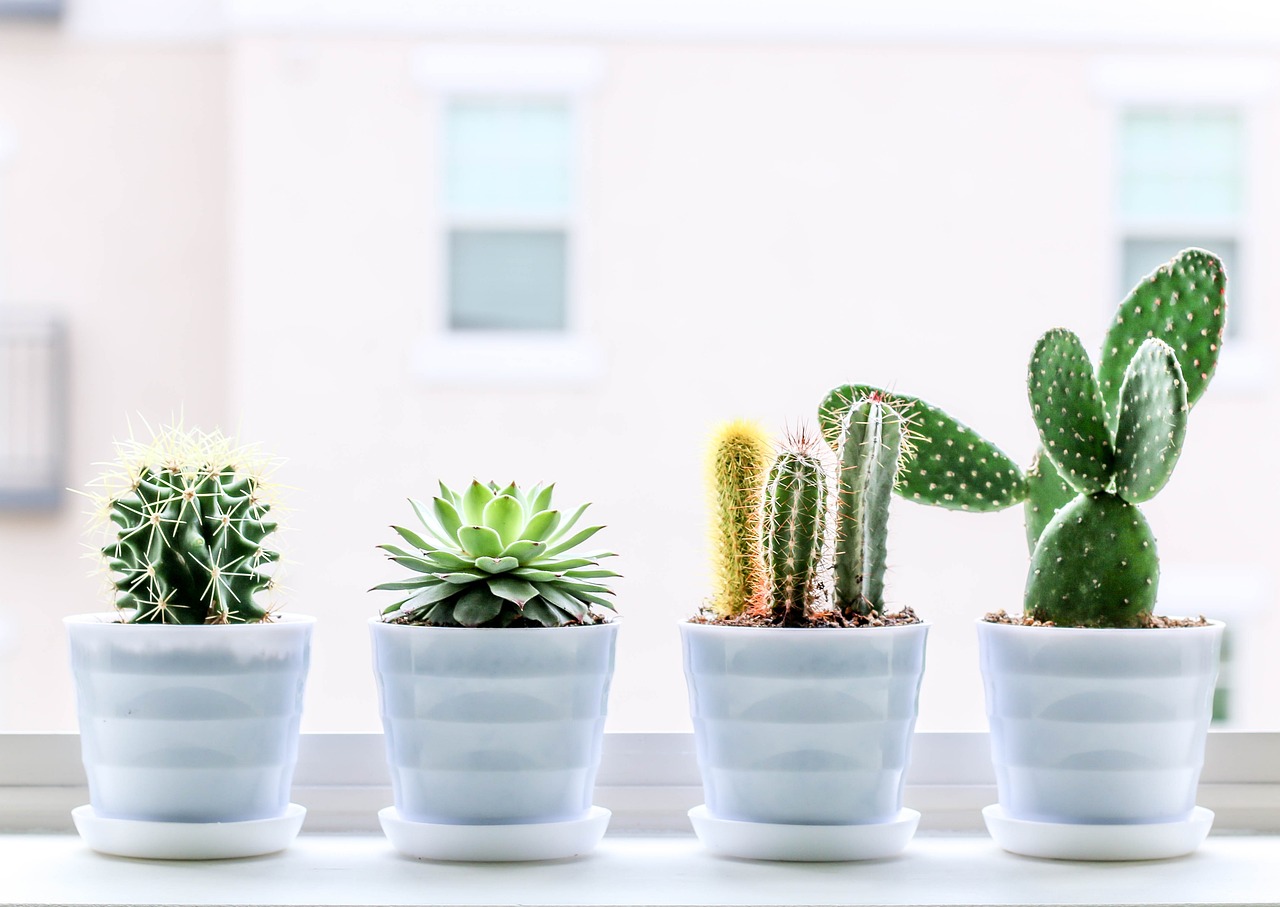Indoor Gardening: Care of Cactus and Succulents
Indoor gardening has become a delightful hobby for many, and among the most popular choices are cacti and succulents. These resilient plants are not only aesthetically pleasing but also require minimal care, making them perfect for both novice and experienced gardeners. In this article, we will explore the essential aspects of caring for these unique plants, ensuring they thrive in your indoor environment. From selecting the right species to understanding their light and water needs, we’ve got you covered!
When it comes to selecting the right cactus or succulent for your indoor space, the options can be overwhelming. With so many varieties available, how do you choose the best one? Start by considering the size of your space and the amount of light it receives. For instance, if you have a sunny windowsill, you might opt for a vibrant Echinopsis or a striking Aloe Vera. On the other hand, if your space is a bit shadier, a Haworthia or Snake Plant could be more suitable.
Here’s a quick guide to help you make the right choice:
| Plant Type | Light Requirements | Size |
|---|---|---|
| Echinopsis | Full Sun | Medium |
| Aloe Vera | Bright Indirect Light | Medium |
| Haworthia | Low to Bright Indirect Light | Small |
| Snake Plant | Low to Bright Light | Large |
Understanding the light requirements of your cacti and succulents is crucial for their growth and well-being. Most of these plants thrive in bright, indirect sunlight, but some, like the Barrel Cactus, prefer direct sunlight. If you notice your plants stretching towards the light or their colors fading, it’s a sign they need more exposure. Conversely, if they start to develop brown spots or appear scorched, they might be getting too much sun.
For those with limited natural light, consider using grow lights. These can mimic the sun's rays and provide the necessary spectrum for plant growth. A simple LED grow light can do wonders for your indoor garden, especially during the darker months.
Watering is a critical aspect of caring for cacti and succulents, and it’s often where many plant parents go wrong. These plants are adapted to arid environments, so they prefer infrequent but deep watering. A common mistake is to water them too often, leading to root rot. Instead, allow the soil to dry out completely between waterings. A good rule of thumb is to check the soil moisture level by sticking your finger about an inch deep into the soil. If it feels dry, it’s time to water!
Here are some effective watering techniques:
- Soak and Dry: Water thoroughly until it drains out of the bottom, then don’t water again until the soil is dry.
- Frequency: During the growing season (spring and summer), water every 2-3 weeks; in the dormant season (fall and winter), reduce to once a month.
The right soil and potting methods can significantly affect the growth of your cacti and succulents. These plants prefer well-draining soil that mimics their natural habitat. A commercial cactus mix is often a great choice, but you can also create your own by combining regular potting soil with sand or perlite to enhance drainage.
When potting, ensure that your containers have drainage holes. Without proper drainage, water can accumulate at the bottom, leading to root rot. Opt for pots made from breathable materials like terracotta, which can help wick moisture away from the roots.
Fertilization can enhance growth and flowering in cacti and succulents. However, it’s essential to strike a balance; too much fertilizer can harm your plants. Use a diluted, balanced fertilizer during the growing season, ideally every 4-6 weeks. Look for a fertilizer specifically designed for cacti and succulents, as they contain the right nutrients tailored for these plants.
Cacti and succulents can be susceptible to pests and diseases, just like any other plants. Common pests include mealybugs, spider mites, and fungal infections. Regularly inspect your plants and keep an eye out for any signs of trouble. If you notice any pests, treat them promptly with insecticidal soap or neem oil. Maintaining good air circulation and avoiding overcrowding can also help prevent infestations.
As the seasons change, so do the needs of your indoor plants. In the spring and summer, your cacti and succulents will be in their growing phase, requiring more light and water. However, as fall and winter approach, it’s time to scale back on watering and fertilizing. During the dormant months, these plants will need less attention, so adjust your care routine accordingly.
Propagating cacti and succulents can be a rewarding experience, allowing you to expand your indoor garden. There are several methods to propagate these plants, including:
- Leaf Cuttings: For succulents, cut a healthy leaf and let it dry for a few days before placing it in soil.
- Offsets: Many cacti produce offsets that can be removed and replanted.
With a little patience and care, you can create a thriving indoor garden filled with your favorite plants.
Q: How often should I water my cactus?
A: Water your cactus every 2-3 weeks during the growing season, allowing the soil to dry out completely between waterings.
Q: Can I use regular potting soil for succulents?
A: It's best to use a well-draining cactus mix or create your own by mixing regular potting soil with sand or perlite.
Q: What should I do if my succulent is turning brown?
A: Brown spots can indicate overwatering or sunburn. Adjust your watering schedule and check the light conditions.

Choosing the Right Cactus and Succulent
When it comes to indoor gardening, one of the most exciting parts is for your space. With their unique shapes, vibrant colors, and minimal care requirements, these plants can transform your home into a green oasis. But how do you decide which one is perfect for you? Well, it starts with understanding the distinct characteristics of various species and how they fit into your lifestyle.
First off, consider the amount of natural light your space receives. Some cacti, like the Golden Barrel Cactus, thrive in bright, direct sunlight, while others, such as the Christmas Cactus, prefer indirect light. On the other hand, succulents like Jade Plants and Hens-and-Chicks can adapt to varying light conditions but still flourish with plenty of light. Before making a decision, assess your environment and choose plants that will thrive in those conditions.
Next, think about the size of the plants. If you're short on space, opt for smaller varieties like Haworthia or Echeveria. These compact succulents can fit perfectly on a windowsill or a small shelf. Conversely, if you have ample room and want to make a statement, larger cacti like the Saguaro or the Organ Pipe Cactus can become stunning focal points in your home.
Another important factor to consider is the aesthetic you want to achieve. Cacti and succulents come in a plethora of colors, shapes, and textures. For a modern look, you might choose sleek, tall cacti like the Columnar Cactus. If you're after a more whimsical vibe, opt for unique succulents with interesting foliage, such as String of Pearls or Burro's Tail. The variety is endless, and the right choice will reflect your personal style.
Finally, don't forget to consider the care requirements of each plant. While many cacti and succulents are low-maintenance, some may require specific conditions to thrive. For instance, if you're a busy individual who travels often, you might want to stick with hardy varieties like the Snake Plant or Agave, which can tolerate neglect. On the other hand, if you enjoy tending to your plants regularly, you might find joy in nurturing more delicate species.
In summary, choosing the right cactus and succulent for your indoor garden involves considering factors like light requirements, size, aesthetic appeal, and care needs. By taking the time to understand these elements, you can create a thriving indoor garden that not only beautifies your space but also brings you joy. So, what are you waiting for? Dive into the wonderful world of cacti and succulents and find the perfect plants for your home!
- What is the easiest cactus or succulent to care for? The Jade Plant and Golden Barrel Cactus are great options for beginners.
- How much light do cacti and succulents need? Most require bright, indirect sunlight for optimal growth, but some can handle direct sunlight.
- Can I keep cacti and succulents in low-light conditions? While some varieties can tolerate low light, they generally thrive best with more light.

Optimal Light Conditions
When it comes to indoor gardening, understanding the for your cacti and succulents is absolutely essential. These hardy plants, while often associated with arid deserts, have specific lighting needs that can make or break their health. Think of light as the fuel that powers your plants; without the right amount, they simply can’t thrive. So, how do you ensure your green friends get just the right amount of that precious sunlight?
First off, it's crucial to recognize that most cacti and succulents love bright, direct sunlight. Ideally, these plants should receive around 6 to 8 hours of sunlight per day. Placing them near a south-facing window is often the best choice, as this position allows them to soak up the sun's rays throughout the day. However, not all indoor spaces are created equal, and sometimes, finding that perfect sunny spot can feel like a game of hide and seek!
But what if your indoor space lacks sufficient natural light? Don’t fret! Artificial lighting can come to the rescue. Grow lights, particularly those that emit full-spectrum light, can mimic the sun’s rays and provide your plants with the energy they need to flourish. These lights are especially useful during the shorter days of winter when sunlight is scarce. When using grow lights, aim to keep them about 12 to 18 inches away from your plants to prevent scorching. Remember, it’s all about balance!
It's also important to monitor your plants for signs of inadequate or excessive light. If your cactus or succulent is stretching towards the light source, it may be craving more brightness. Conversely, if you notice any signs of burnt leaves or fading colors, it could be a clear signal that they’re getting too much sunlight. In such cases, you might need to adjust their position or provide some shade during peak sunlight hours.
To sum it up, here are some key takeaways regarding light conditions for cacti and succulents:
- Direct Sunlight: Aim for 6 to 8 hours daily.
- South-Facing Windows: Ideal for maximizing sunlight exposure.
- Artificial Lighting: Use grow lights if natural light is insufficient.
- Monitor Your Plants: Adjust care based on their response to light.
In conclusion, providing the right light conditions is crucial for the health and vitality of your indoor cacti and succulents. By being attentive to their needs and adjusting their environment accordingly, you can create a thriving indoor garden that not only beautifies your space but also brings joy and satisfaction as you watch your plants grow!

Watering Techniques
Watering your cacti and succulents might seem straightforward, but it’s an art that requires a bit of finesse! These plants are specially adapted to survive in arid environments, which means they have unique watering needs compared to other houseplants. Overwatering is often the silent killer of these beauties, leading to root rot and a sad, droopy plant. So, how do you strike the right balance?
First off, it’s essential to understand the soil moisture levels. Cacti and succulents thrive in well-draining soil, which allows excess water to escape quickly. A good rule of thumb is to let the soil dry out completely between waterings. You can test this by sticking your finger about an inch into the soil; if it feels dry, it’s time to water! If it’s still moist, wait a few more days. Remember, patience is key!
When it comes to actually watering, there are a couple of techniques you can use. One effective method is the deep soaking technique. This involves thoroughly watering the plant until you see water draining from the bottom of the pot. This ensures that the roots receive adequate moisture. However, make sure to empty any excess water from the saucer after a few minutes to prevent the roots from sitting in water. Sitting water is a big no-no!
Another method is the bottom watering technique. This is especially useful for plants that are sensitive to overwatering. Simply place your potted plant in a basin of water and let it soak up moisture from the bottom for about 20-30 minutes. This way, the plant can absorb the water it needs without the risk of getting too much at once.
As for frequency, it varies depending on the season. During the growing season (spring and summer), you might find yourself watering every week or two. In contrast, during the dormant months (fall and winter), reduce watering to every few weeks. This seasonal adjustment is crucial, as plants require less moisture when they are not actively growing.
To help you visualize the watering frequency, here’s a simple table:
| Season | Watering Frequency |
|---|---|
| Spring | Every 1-2 weeks |
| Summer | Every 1-2 weeks |
| Fall | Every 2-3 weeks |
| Winter | Every 3-4 weeks |
Keep an eye on your plants' leaves as well. If they start to look shriveled or wrinkled, they may be thirsty. On the other hand, if the leaves are mushy or discolored, you might be overwatering. It’s all about observation and adjusting your care routine accordingly!
In conclusion, mastering the watering techniques for cacti and succulents is vital for their health and happiness. By understanding their unique needs and adjusting your watering habits seasonally, you can ensure that these resilient plants thrive in your indoor garden. So grab that watering can and get ready to nurture your little green friends!
- How often should I water my cactus? Generally, every 1-2 weeks during the growing season and every 3-4 weeks in winter.
- What type of soil is best for cacti and succulents? A well-draining soil mix designed for cacti and succulents is ideal.
- Can I use regular potting soil? It’s not recommended, as regular potting soil retains too much moisture.
- How can I tell if my plant is overwatered? Look for yellowing leaves, mushy stems, or a foul smell from the soil.

Soil and Potting Requirements
When it comes to indoor gardening, particularly with cacti and succulents, the importance of soil and potting cannot be overstated. These plants are unique in their needs, thriving in conditions that mimic their natural arid habitats. To set your green friends up for success, you'll want to start with the right soil mix. Unlike traditional houseplants, cacti and succulents require a well-draining soil that allows excess water to escape quickly, preventing root rot. A typical potting soil can retain too much moisture, which is a big no-no for these hardy plants.
So, what exactly should you look for? A good mix for cacti and succulents often includes a combination of potting soil, sand, and perlite or pumice. This blend creates an environment that retains just enough moisture while allowing air to circulate around the roots. You can either purchase a pre-made cactus mix from a garden center or create your own. If you opt for the DIY route, aim for a ratio of about 2 parts potting soil, 1 part sand, and 1 part perlite. This combination will ensure that your plants have the right balance of nutrients and drainage.
Now, let’s talk about potting. The choice of pot is equally crucial. Cacti and succulents thrive in pots with drainage holes. Why? Because these holes allow excess water to escape, which is essential for preventing soggy roots. When selecting a pot, consider using terracotta or clay pots, as they are porous materials that help wick moisture away from the soil, keeping it drier than plastic pots.
Once you have your soil and pot sorted, it’s time to think about how to pot your plants. Gently remove your cactus or succulent from its nursery pot and shake off any excess soil. Place a layer of your chosen soil mix at the bottom of the new pot, then position your plant in the center. Fill in around the sides with more soil, pressing down lightly to eliminate air pockets. Be careful not to bury the plant too deep; the top of the root ball should sit just below the rim of the pot. This allows for proper air circulation and prevents water from pooling around the stem.
After potting, it’s essential to let your cactus or succulent settle in. For the first week, avoid watering to allow the roots to heal and adapt to their new environment. During this time, place your plant in a bright, indirect light location. Once you see new growth, you can begin your regular watering schedule. Remember, less is more when it comes to watering these tough little guys!
In summary, the right soil and potting techniques are crucial for the health of your cacti and succulents. By selecting a well-draining soil mix and ensuring proper pot choice, you create an ideal environment for your plants to flourish. Happy gardening!
- What type of soil is best for cacti and succulents? A well-draining mix that includes potting soil, sand, and perlite or pumice is ideal.
- Do I need to fertilize my cacti and succulents? Yes, fertilization can enhance growth, but it’s best done during the growing season.
- How often should I repot my cacti and succulents? Generally, repotting every 2-3 years is sufficient, or when the plant outgrows its pot.

Fertilizing Your Plants
When it comes to indoor gardening, especially with cacti and succulents, fertilization is a game-changer. These hardy plants may seem low-maintenance, but they too benefit from a little extra love in the form of nutrients. Understanding when and how to fertilize your plants can mean the difference between a thriving garden and a lackluster display. So, let’s dig in!
First off, it’s crucial to recognize that cacti and succulents have specific nutritional needs that differ from other houseplants. They thrive in poor soil conditions, so over-fertilizing can lead to more harm than good. A good rule of thumb is to fertilize during the growing season, which typically runs from spring to early fall. During this period, your plants are actively growing and can benefit from the added nutrients.
Now, what kind of fertilizer should you use? Look for a balanced, water-soluble fertilizer with a ratio like 10-10-10 or 20-20-20. This means it contains equal parts nitrogen, phosphorus, and potassium, which are essential for plant growth. Alternatively, you can opt for a fertilizer specifically designed for cacti and succulents, which often has a lower nitrogen content. Here’s a quick comparison:
| Type of Fertilizer | Benefits | Application Frequency |
|---|---|---|
| Balanced Water-Soluble | Promotes overall growth | Every 4-6 weeks during growing season |
| Cactus/Succulent-Specific | Tailored nutrient profile | Every 6-8 weeks during growing season |
When applying fertilizer, always dilute it to half the recommended strength. This precaution helps prevent root burn, which can occur if the fertilizer is too concentrated. You can apply it during watering to ensure even distribution. Just remember, less is more—it’s better to under-fertilize than to overdo it!
Keep an eye on your plants after fertilization. Signs that your plants are thriving include vibrant colors and new growth. Conversely, if you notice yellowing leaves or stunted growth, you might be over-fertilizing. Adjust your routine accordingly, and your plants will thank you!
Lastly, don’t forget about the importance of organic fertilizers. They can be a fantastic option for those who prefer a more natural approach. Products like compost or worm castings can provide a slow-release source of nutrients, ensuring your cacti and succulents get what they need without the risk of chemical buildup.
In conclusion, fertilizing your cacti and succulents is all about timing, type, and technique. By understanding their unique needs and adjusting your care routine accordingly, you can create a flourishing indoor garden that brings joy and beauty to your space.
- How often should I fertilize my cacti and succulents? - Generally, every 4-6 weeks during the growing season is ideal.
- Can I use regular houseplant fertilizer? - While you can, it's better to use a fertilizer formulated for cacti and succulents.
- What are the signs of over-fertilization? - Yellowing leaves and stunted growth can indicate that you’re giving too much fertilizer.
- Is organic fertilizer effective? - Yes! Organic options like compost can provide essential nutrients without the risk of chemical buildup.

Pest and Disease Management
When it comes to indoor gardening, managing pests and diseases is as vital as watering your plants. Cacti and succulents, while generally hardy, are not immune to the occasional intruder or illness. Imagine your beloved cactus, standing tall and prickly, suddenly becoming a feast for mealybugs! It’s a nightmare every plant parent wants to avoid. So, let’s dive into the world of pest and disease management to ensure your green friends remain healthy and thriving.
First off, it’s essential to recognize the common pests that can invade your indoor oasis. These include:
- Mealybugs: These tiny, white, cotton-like pests love to hide in the crevices of your plants.
- Spider Mites: Often found on the undersides of leaves, these pests can cause significant damage if left unchecked.
- Scale Insects: They appear as small, brown bumps on your plants and can be quite stubborn to remove.
- Aphids: These little green or black bugs suck the sap from your plants, leading to stunted growth.
Now that we’ve identified the culprits, how do you tackle these pests? The first line of defense is regular inspection. Check your plants weekly for any signs of trouble. If you notice any unwanted guests, don’t panic! You can often remove them by hand or use a soft cloth dipped in soapy water to wipe them away. For more stubborn infestations, consider using an insecticidal soap or neem oil, both of which are effective yet gentle on your plants.
But pests aren’t the only concern; diseases can also rear their ugly heads. Fungal infections, like root rot, can occur if your plants are overwatered or if the soil doesn’t drain well. To prevent this, always ensure your pots have drainage holes and use a well-draining soil mix. If you suspect root rot, gently remove the plant from its pot, trim away any black or mushy roots, and repot it in fresh soil. This can save your plant from an untimely demise.
Another common issue is leaf spot disease, which can be caused by overwatering or poor air circulation. If you notice brown spots on your succulent leaves, it’s time to take action. Start by removing the affected leaves and adjusting your watering routine. Ensure that your plants have enough airflow around them, as this can help prevent future outbreaks.
To keep your indoor garden flourishing, consider implementing a regular maintenance routine. This can include:
- Inspecting plants weekly for pests and diseases.
- Cleaning leaves with a damp cloth to remove dust and potential pests.
- Ensuring proper watering techniques to avoid creating a breeding ground for diseases.
In conclusion, the key to successful pest and disease management lies in vigilance and preventive care. By keeping a close eye on your plants and addressing any issues promptly, you can enjoy a thriving indoor garden filled with beautiful cacti and succulents. Remember, a little care goes a long way in ensuring your plants remain healthy and vibrant!
Q1: How often should I check my plants for pests?
A1: It's a good practice to inspect your plants at least once a week. Early detection can save your plants from severe infestations.
Q2: Can I use household products to manage pests?
A2: Yes, many household items like soapy water or vinegar can be effective against pests. Just ensure they are diluted properly to avoid harming your plants.
Q3: What should I do if my plant has root rot?
A3: Remove the plant from its pot, trim away any rotten roots, and repot it in fresh, well-draining soil. Adjust your watering habits to prevent recurrence.
Q4: Are there any natural remedies for pest control?
A4: Absolutely! Neem oil and insecticidal soap are great natural options to control pests without harming your plants.

Seasonal Care Tips
Taking care of cacti and succulents isn't just a one-size-fits-all approach; it requires a bit of finesse and understanding of the seasons. Just like we adapt our wardrobes and routines with the changing weather, your plants need different care depending on the time of year. Let's dive into how you can keep your indoor garden thriving all year round!
During the winter months, cacti and succulents enter a period of dormancy. This means they require less water and minimal fertilization. It's crucial to reduce your watering schedule significantly—think of it as a hibernation period for your plants. Instead of the usual weekly watering, you might only need to water every three to four weeks. This is also the time to ensure your plants are getting enough light, as days are shorter and darker. If natural light is scarce, consider using grow lights to supplement their needs.
As spring rolls in, your plants will start waking up from their slumber, and this is when you can ramp up your care routine. Begin to increase watering gradually, as the warmer temperatures will encourage growth. It's also a great time to repot any plants that have outgrown their containers. A fresh mix of soil can do wonders for their health. You might want to start fertilizing again, but remember to use a diluted fertilizer designed specifically for cacti and succulents. This gentle boost will help them flourish as they enter their growth phase.
Summer is the peak growing season for these hardy plants. They thrive in bright, direct sunlight, so make sure they’re positioned in a spot where they can soak up those rays. However, be cautious of extreme heat. If temperatures soar, it’s essential to monitor your plants for signs of stress, such as wilting or sunburned leaves. Watering frequency will increase during this time, but always check the soil moisture first. A good rule of thumb is to water when the top inch of soil feels dry.
As autumn approaches, it's time to prepare your cacti and succulents for the upcoming winter. Gradually reduce watering again, as the plants will slow down their growth. This is also a good time to inspect for pests or diseases, as the change in weather can invite unwanted guests. If you notice any issues, take action quickly to prevent infestations from spreading. Additionally, consider moving your plants closer to windows to maximize their light intake as daylight hours decrease.
To summarize, here’s a quick reference table for seasonal care:
| Season | Watering Frequency | Fertilization | Light Requirements |
|---|---|---|---|
| Winter | Every 3-4 weeks | None | Bright, indirect light |
| Spring | Weekly | Start fertilizing | Direct sunlight |
| Summer | Every 5-7 days | Regular fertilization | Bright, direct sunlight |
| Autumn | Every 2-3 weeks | None | Bright, indirect light |
By paying attention to these seasonal changes, you can ensure that your cacti and succulents not only survive but thrive in your indoor garden. Remember, each plant is unique, and observing their individual needs will help you become a better plant parent!
Q: How often should I water my cactus in winter?
A: During winter, you should water your cactus every 3-4 weeks, as they enter a dormancy period.
Q: Can I use regular potting soil for my succulents?
A: It's best to use a well-draining soil mix specifically for cacti and succulents to prevent root rot.
Q: What signs indicate my succulent is getting too much sunlight?
A: Look for signs like bleached or sunburned leaves, which indicate they are getting too much direct sunlight.
Q: How can I propagate my succulents?
A: You can propagate succulents through leaf cuttings or offsets. Just ensure the cuttings dry out for a day or two before planting them in soil.

Propagation Methods
Propagation of cacti and succulents can be one of the most rewarding aspects of indoor gardening. Imagine being able to take a small piece of your beloved plant and turn it into a brand new one! Not only does this process allow you to expand your indoor garden, but it also gives you the joy of sharing plants with friends and family. There are several effective methods for propagating these resilient plants, and understanding them can help you become a true green thumb.
One of the most popular methods is through leaf cuttings. This technique involves snipping off a healthy leaf from the parent plant and allowing it to callous over for a few days. Once the cut end is dry, you can place it on top of well-draining soil. Make sure to mist it lightly and provide bright, indirect light. In a few weeks, you should start to see roots developing, and eventually, new growth will emerge! Isn't it fascinating how nature works?
Another effective method is using offsets, which are small plants that grow at the base of the parent cactus or succulent. To propagate offsets, gently twist or cut them away from the main plant, ensuring that you have some roots attached. Allow the cut end to callous for a day or two, then plant it in a suitable potting mix. These offsets often take root quickly and can grow into robust plants in no time.
If you're feeling adventurous, you might also want to try stem cuttings. This method is similar to leaf cuttings but is specifically for plants that grow from stems. Cut a healthy stem, let it dry for a couple of days to form a callous, and then place it in soil. The process is quite similar to leaf cuttings, but the results can be even more spectacular, as you can create larger plants from just a single stem.
In addition to these common methods, water propagation is gaining popularity. This involves placing a cutting in water until roots develop before transferring it to soil. While this method can be visually appealing, especially for those who love to see the roots grow, it’s essential to remember that not all succulents thrive in water for long periods, so keeping an eye on the health of the cutting is crucial.
To summarize the various propagation methods, here's a quick table for your reference:
| Method | Description | Best For |
|---|---|---|
| Leaf Cuttings | Snip a leaf and allow it to callous before planting. | Most succulents |
| Offsets | Remove small plants from the base of the parent. | Cacti and some succulents |
| Stem Cuttings | Cut a stem, let it callous, then plant. | Cacti and tall succulents |
| Water Propagation | Place a cutting in water until roots develop. | Some succulents |
Remember, patience is key in propagation. It can take time for your cuttings to root and grow, but with a little care and attention, you’ll be rewarded with new plants that can thrive alongside their parent. So grab your scissors, and let the propagation adventure begin!
Q: How long does it take for cuttings to root?
A: It can take anywhere from a few weeks to a couple of months, depending on the species and environmental conditions.
Q: Can I propagate cacti and succulents in water?
A: Yes, but not all species thrive in water for extended periods. It's best to monitor their health closely.
Q: What is the best time of year to propagate?
A: Spring and early summer are ideal times for propagation as plants are actively growing.
Frequently Asked Questions
- What are the best types of cacti and succulents for indoor gardening?
When it comes to indoor gardening, some of the best cacti and succulents include the Echinopsis, Haworthia, and Jade Plant. These varieties are not only beautiful but also hardy, making them perfect for beginners. Their unique shapes and colors can add a delightful touch to your indoor space.
- How much light do cacti and succulents need?
Cacti and succulents thrive in bright, indirect sunlight. Ideally, they should receive around 6 hours of light daily. If natural light is limited, consider using grow lights to ensure your plants get the energy they need to grow strong and healthy.
- How often should I water my cacti and succulents?
Watering frequency depends on the season and the specific plant. Generally, it's best to water your cacti and succulents every 2-3 weeks during the growing season (spring and summer) and reduce it to once a month in the winter. Always check the soil moisture before watering to avoid overwatering!
- What type of soil is best for cacti and succulents?
A well-draining soil mix is essential for these plants. Look for a cactus or succulent potting mix that contains components like perlite, sand, or pumice. This helps prevent root rot by allowing excess water to drain away quickly.
- Do I need to fertilize my cacti and succulents?
Yes! Fertilizing can promote growth and flowering. Use a diluted, balanced fertilizer during the growing season, typically every 4-6 weeks. Just be sure not to fertilize in the winter when the plants are dormant.
- What are common pests that affect cacti and succulents?
Common pests include mealybugs, aphids, and spider mites. Keeping an eye on your plants and regularly checking for any signs of infestation can help you catch these issues early. If you spot any pests, treating them with insecticidal soap or neem oil can be effective.
- How can I adjust care for seasonal changes?
As seasons change, so do the needs of your plants. In spring and summer, you may need to water more frequently and provide more light. In contrast, during fall and winter, reduce watering and keep them in a cooler spot to mimic their natural dormancy period.
- What are the best methods for propagating cacti and succulents?
Propagation can be done through leaf cuttings or offsets. For leaf cuttings, allow the cut end to dry and callous over before planting it in soil. For offsets, gently remove them from the parent plant and pot them in their own container. Both methods can be incredibly rewarding!



















